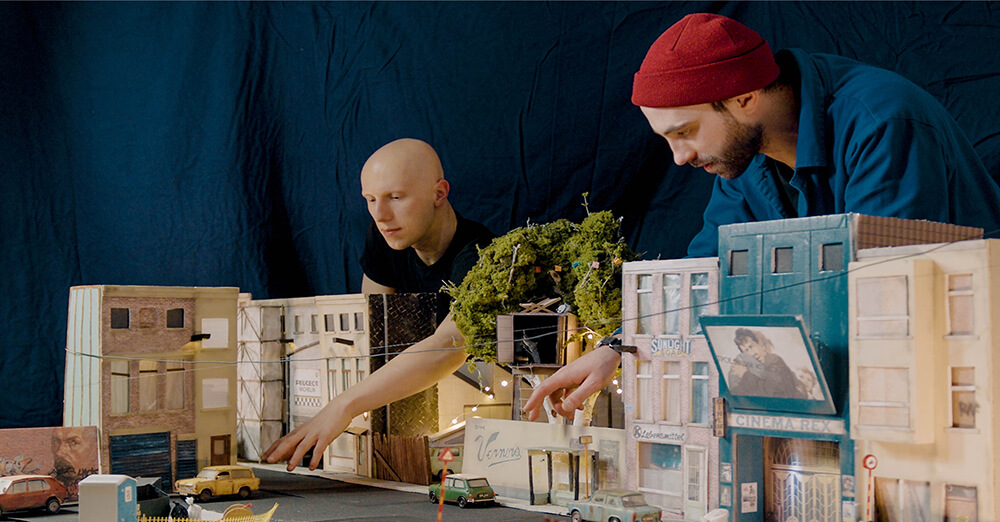Reynout Dekimpe (Bruges, 1991) graduated as an actor at Luca school of arts. He created his own theatre company ‘RAF’ for which he writes his own plays. Next to acting and writing, creating worlds in miniature is his lifelong passion. Dekimpe's unique blend of artistic talents has led to the development of immersive experiences that blur the lines between theatre, film, and fine arts.
Robbe Maes (Leuven, 1990) graduated as a filmmaker at the same school. He has directed several shortfilms and music videos. He his known for his playful and creative style that explores the boundaries of imagination.
After meeting on a few filmsets, both artists moved to Antwerp in 2016 where the shared a house together. "Nr7" became their artistic playground for making miniature models and filming them in a darkened kitchen. During that period, they developed their unique style, which is characterized by handmade models as a central theme for cinematographic experiences.
In january 2024, their first solo expo "Welcome to Fieldkapelle" premièred at the Rotterdam Photo festival, displaying several scalemodels and their accompanying photographs. Soon after they were awarded as "shortlist" artist for the Belfast photo festival and "longlist artist" for the Aesthetica Art price. Their current expo is now on display in the city center of Bruges.
Instagram
@robbe.maes
@reynoutdekimpe
